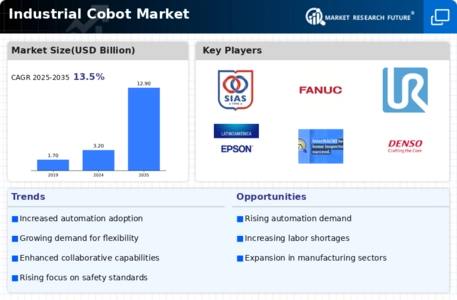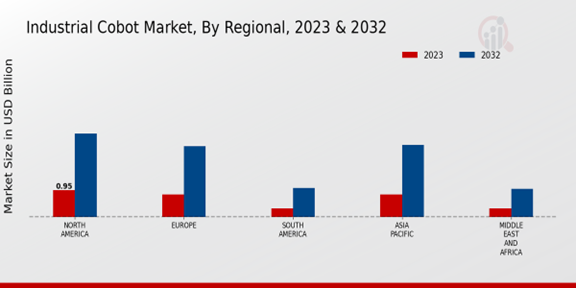Industrial Cobot Market Summary
The Global Industrial Cobot Market is projected to grow significantly from 3.20 USD Billion in 2024 to 12.93 USD Billion by 2035, reflecting a robust growth trajectory.
Key Market Trends & Highlights
Industrial Cobot Key Trends and Highlights
- The market is expected to expand at a compound annual growth rate (CAGR) of 13.53% from 2025 to 2035.
- By 2035, the market valuation is anticipated to reach 12.9 USD Billion, indicating substantial growth opportunities.
- in 2024, the market is valued at 3.20 USD Billion, laying a solid foundation for future expansion.
- Growing adoption of collaborative robotics due to increasing demand for automation in manufacturing is a major market driver.
Market Size & Forecast
| 2024 Market Size | 3.20 (USD Billion) |
| 2035 Market Size | 12.93 (USD Billion) |
| CAGR (2025-2035) | 13.52% |
Major Players
Siasun, Fanuc, Universal Robots, Epson, Nachi, Denso, ABB, Doosan Robotics, Stäubli, Hyundai Robotics, Yaskawa, KUKA, Mitsubishi Electric, AUBO Robotics, Kawasaki



 Source: Primary Research, Secondary Research, Market Research Future Database and Analyst Review
Source: Primary Research, Secondary Research, Market Research Future Database and Analyst Review


















